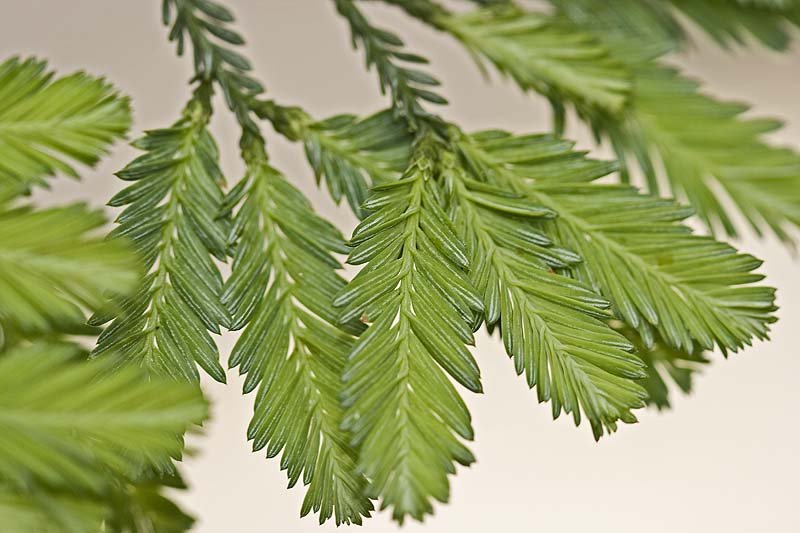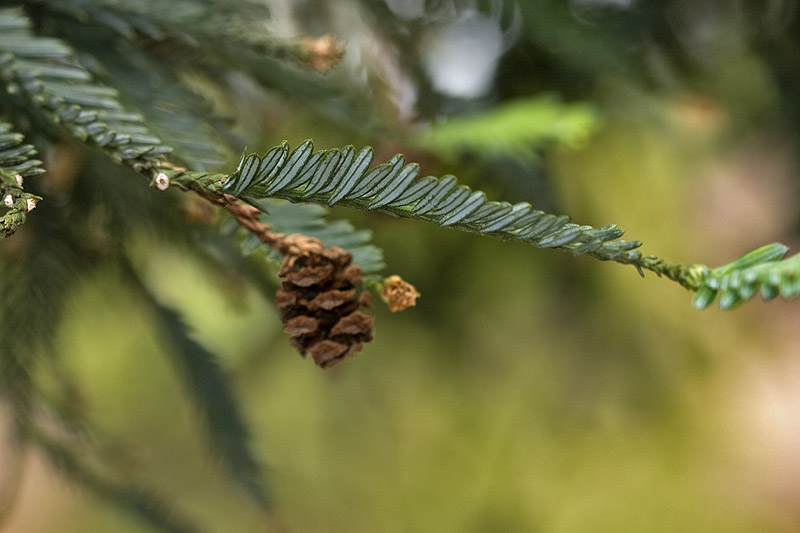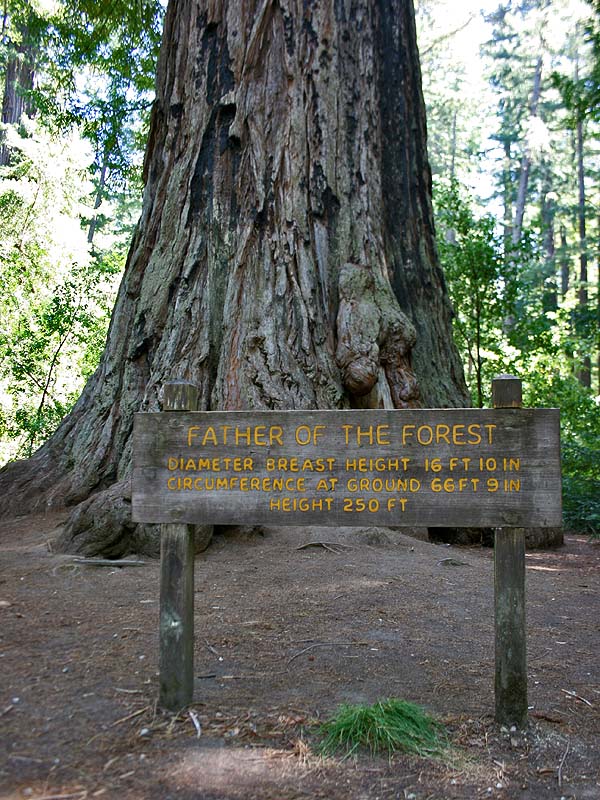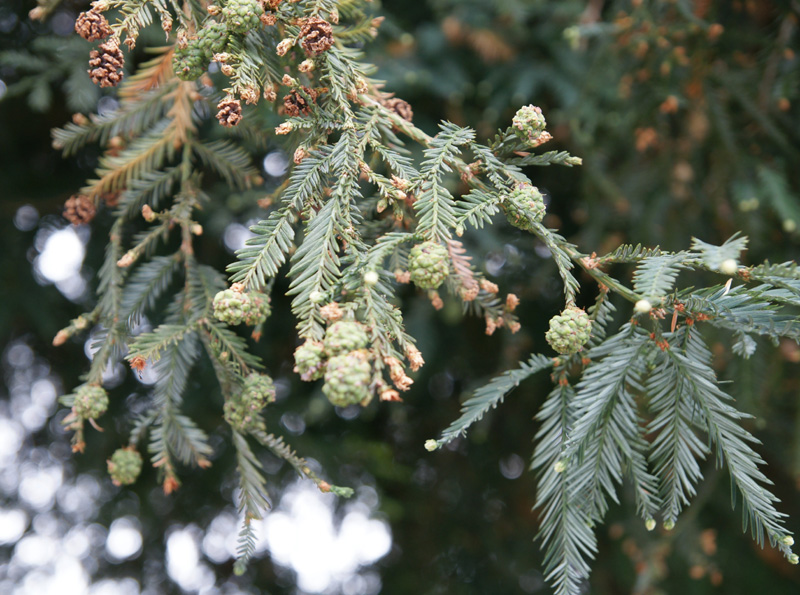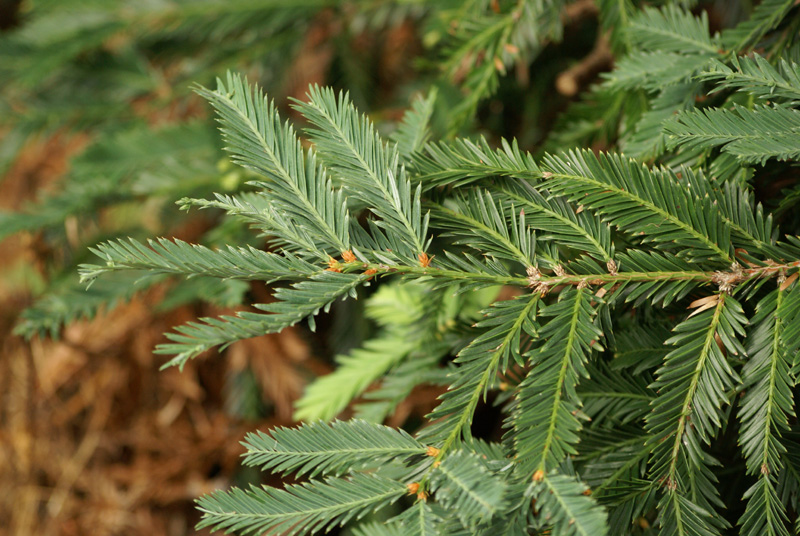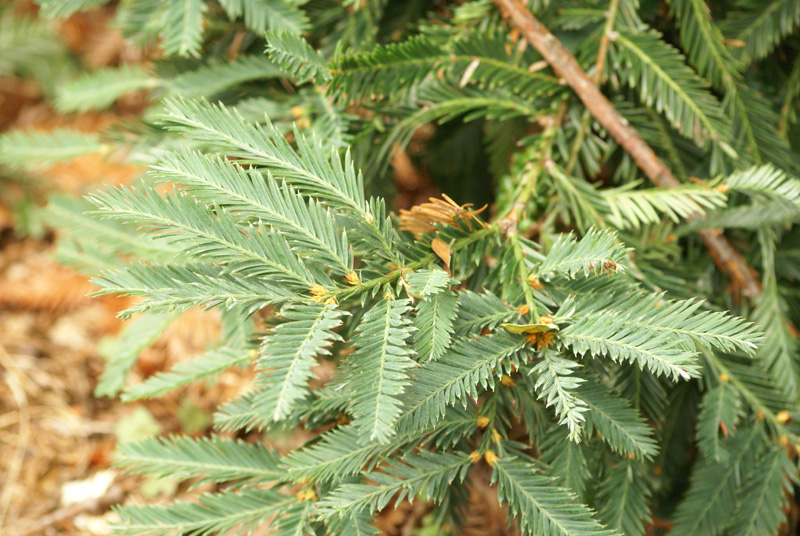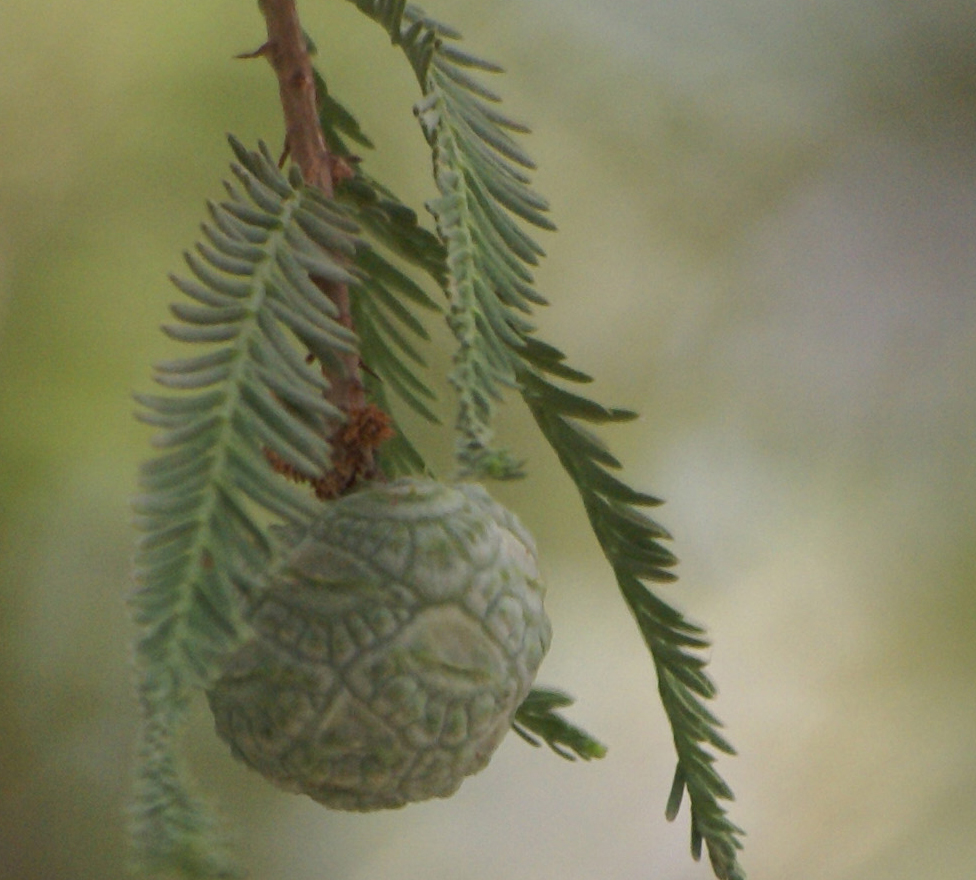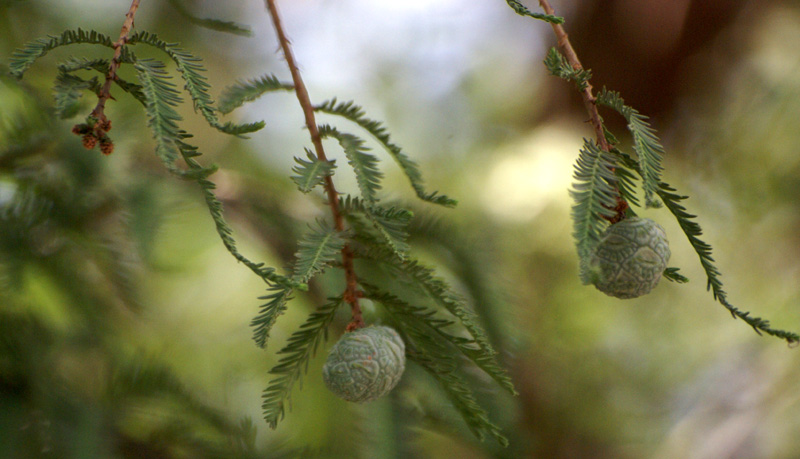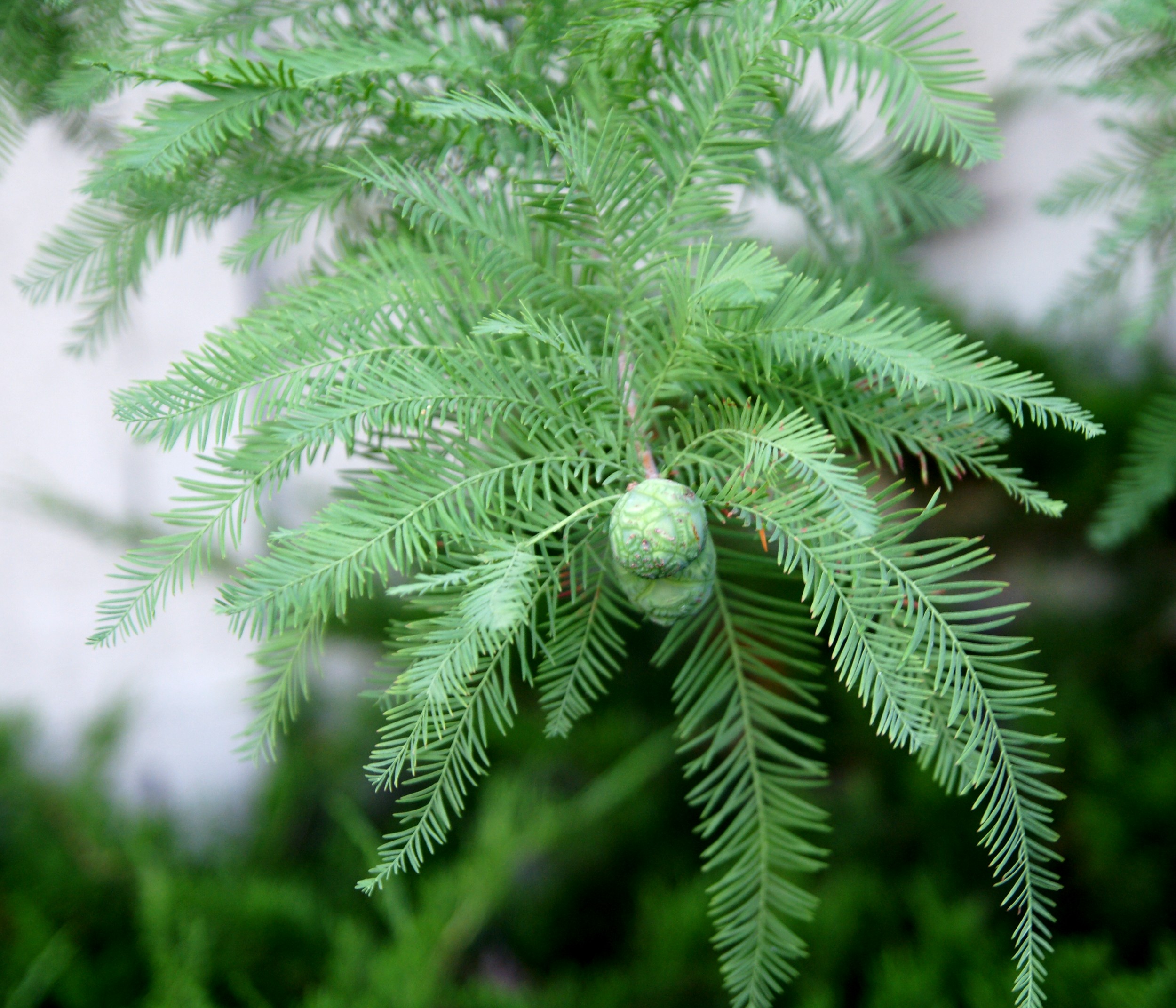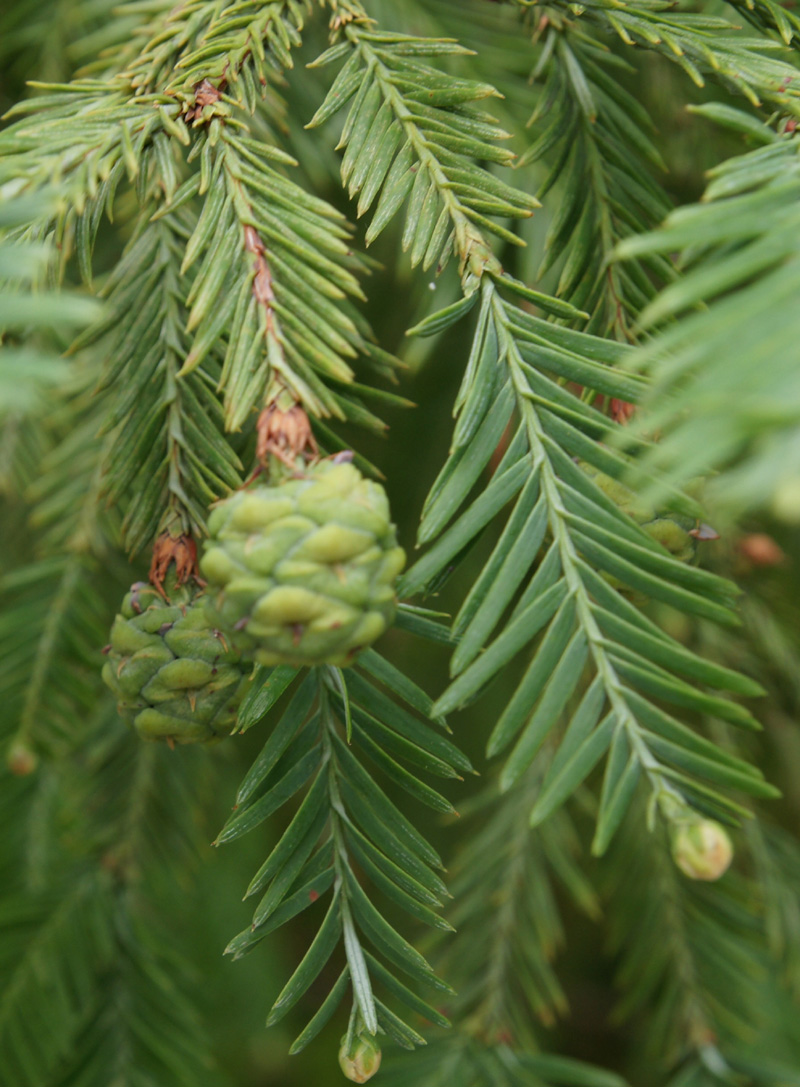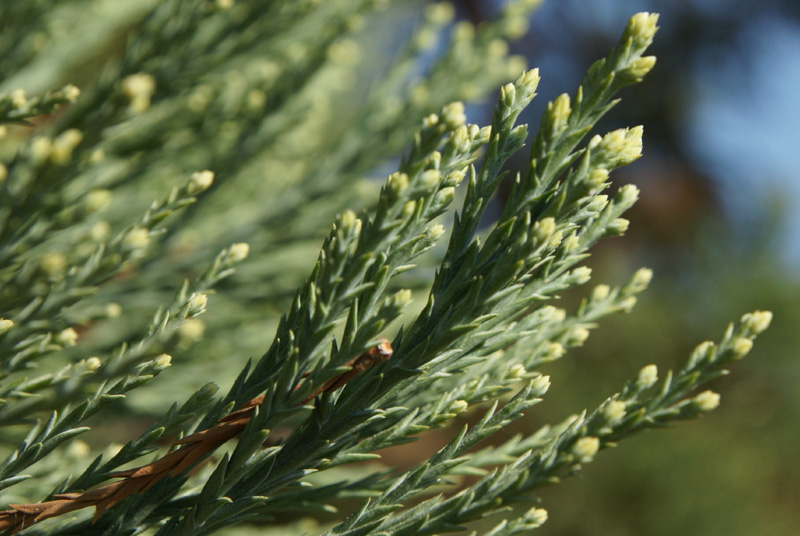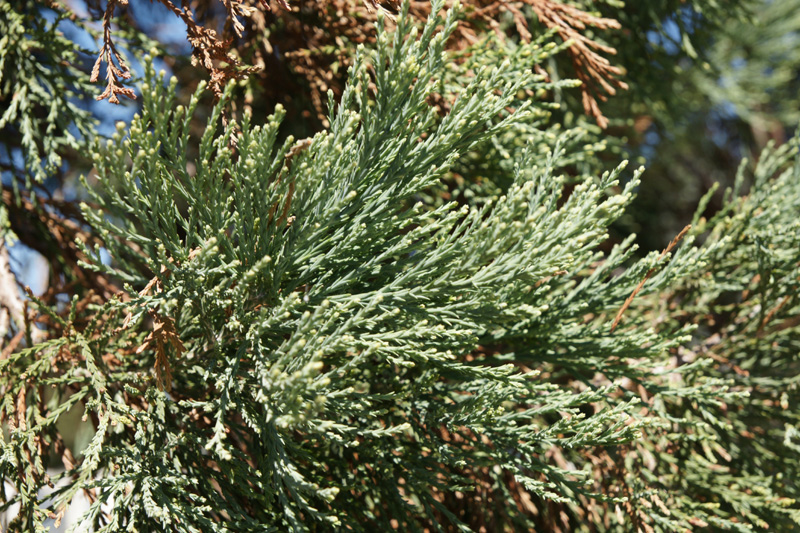|
Sequoia sempervirens (D.Don) Endl., Syn. Conif. 198 1847. (Syn: Condylocarpus sempervirens Salisb. ex Carrière; Gigantabies taxifolia J. Nelson; Schubertia sempervirens (Lamb.) Spach; Sequoia pyramidata Carrière; Sequoia religiosa C.Presl; Sequoia sempervirens var. nana-pendula Hornibr.; Sequoia taxifolia K.Koch; Steinhauera sempervirens (D.Don) Voss; Taxodium nutkaense Lamb. ex Endl.; Taxodium sempervirens D.Don);
Sequoia sempervirens /sɨˈkɔɪ.ə sɛmpərˈvaɪərənz/[2] is the sole living species of the genus Sequoia in the cypress family Cupressaceae (formerly treated in Taxodiaceae). Common names include coast redwood, California redwood, and giant redwood.[3] It is an evergreen, long-lived, monoecious tree living 1200–1800 years or more.[4] This species includes the tallest trees living now on Earth, reaching up to 379 feet (115.5 m) in height (without the roots) and up to 26 feet (7.9 m) in diameter at breast height.
Before commercial logging and clearing began by the 1850s, this massive tree occurred naturally in an estimated 2,100,000 acres (8,500 km2) along much of coastal California (excluding southern California where rainfall is not sufficient) and the southwestern corner of coastal Oregon within the United States. An estimated 95% or more of the original old-growth redwood forest has been cut down,[5] due to its excellent properties for use as lumber in construction.
The coast redwood has a conical crown, with horizontal to slightly drooping branches. The bark is very thick, up to 30 cm (12 in), and quite soft and fibrous, with a bright red-brown color when freshly exposed (hence the name redwood), weathering darker. The root system is composed of shallow, wide-spreading lateral roots. The leaves are variable, being 15–25 mm (0.59–0.98 in) long and flat on young trees and shaded shoots in the lower crown of old trees, and scale-like, 5–10 mm (0.20–0.39 in) long on shoots in full sun in the upper crown of older trees, with a full range of transition between the two extremes. They are dark green above, and with two blue-white stomatal bands below. Leaf arrangement is spiral, but the larger shade leaves are twisted at the base to lie in a flat plane for maximum light capture. The species is monoecious, with pollen and seed cones on the same plant. The seed cones are ovoid, 15–32 millimetres (0.59–1.3 in) long, with 15–25 spirally arranged scales; pollination is in late winter with maturation about 8–9 months after. Each cone scale bears three to seven seeds, each seed 3–4 millimetres (0.12–0.16 in) long and 0.5 millimetres (0.020 in) broad, with two wings 1 millimetre (0.039 in) wide. The seeds are released when the cone scales dry out and open at maturity. The pollen cones are oval, 4–6 millimetres (0.16–0.24 in) long. (From Wikipedia on 13.12.13)
Gymnosperms Fortnight:: A gymnosperm from Sunnyvale California : SMP05 : Attachments (3). 2 posts by 2 authors. Sharing some pictures of a gymnosperm from California. Bay area. Gymnosperms Fortnight:: Big Basin USA :: SMP 19 : Attachments (1). 1 post by 1 author.
Big Basin Redwoods State Park has a large number of Sequoia sempervirens (Coast redwoods) The two biggest are Father and Mother of forest.
Sharing an image of Mother of the forest from the park. Big Basin Redwoods State Park has a large number of Sequoia sempervirens (Coast redwoods) The two biggest are Father and Mother of forest.
Sharing an image of Father of the forest from the park. Thanks for these interesting images
Gymnosperm Fortnight: Taxodiaceae-Sequoia sempervirens from California-GS-47 : Attachments (3).
1 post by 1 author.
Sequoia sempervirens (D. Don) Endl.,
One of the tallest trees often reaching 100 m in height, with leaves of two types: scale leaves on terminal branches and fertile shoots up to 12 mm long, those on branches 2-ranked, up to 25 mm long, spreading; female cones up to 4 cm long.
Photographed from Sunnyvale and SFO, California
Seen in Fremont, on the 28th Sept,14.
A very tall tree with cones, probably Pine Species.
If this gets confirmed as Sequoia sempervirens, then you have seen the tallest tree species on earth! Thanks for the feedback. Sounds interesting. Would love to have the id validated.
Thanks for your help in identification of my trees.
Have yet to start my garden flowers…..which would probably go on for weeks.
Sometimes I wonder how I could manage to click so many new ones in a short span of less than two weeks, visiting three cities and a family wedding which was the main purpose of our visit.
Found similar pictures on going through my pictures.
Are these the same, famous Redwoods?
Taken in Sacramento and Fremont.
The 2nd set looks more like Taxodium distichum. Now I am confused! First set is clearly Sequoia sempervirens. Second set also seems same except for 2nd, 5th and 6th which are doubtful. Here are three which are likely to be confused. Attachments (7) Now I seem to be doubtful about my Taxodium from Delhi, seems different from my Taxodium from California The second set of pictures are taken of three trees.
First picture in Sacramento, Second, third, fourth in Fremont of same tree. Fifth & Sixth again in Sacramento.
…, sorry for confusing you. They all looked same to me.
Now I am slowly seeing the difference.
Don’t worry, …
Taxodium it seems has many variants, not all listed, even the chinese ones have variations so take home message is regional variation at a static point in time and in time across the eons
References: |
Sequoia sempervirens (USA)
Updated on December 24, 2024


